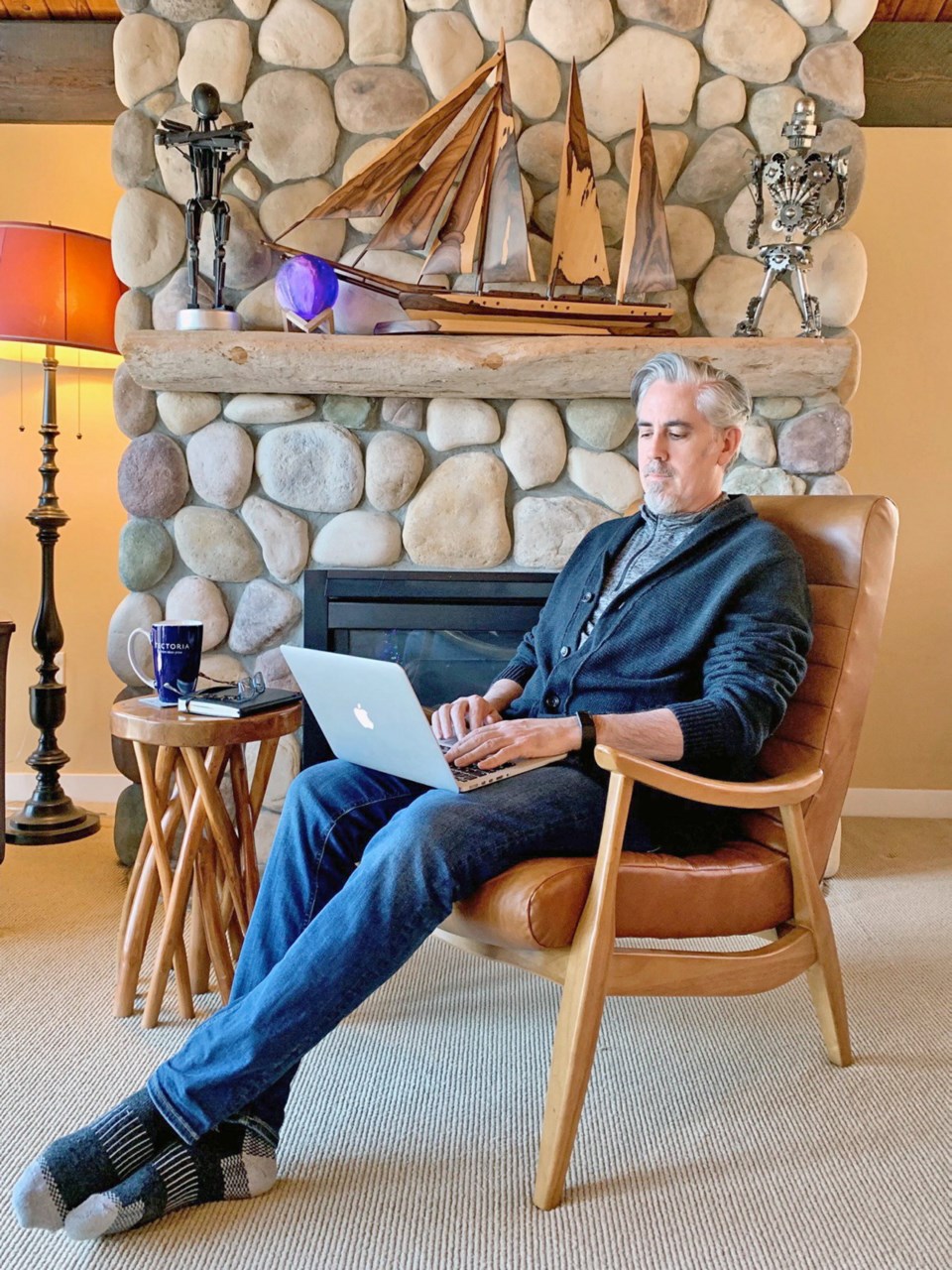Canadians across the country set up laptops and cellphones to work from home on Monday to avoid COVID-19.
While it’s a new experience for some, others — such as members of the capital region’s high-tech sector — are familiar with working remotely.
Dan Gunn, chief executive director of the Victoria Innovation, Advanced Technology and Entrepreneurship Council, estimates he’s out of the office at least half the time. All 10 council staffers are now working remotely, he said, and the building’s ground-level lounge has been closed for now.
Monday morning started with an online team video meeting, he said. “There’s something human about being able to see people laugh and smile and connect that way and I think that’s pretty important.”
Video-conferencing saves time because participants can pick up social cues from others, he said.
“Getting to see each other’s faces is good because then you can tell in a middle of a sentence if somebody has a question or if they are not agreeing with you, so you can stop and say: ‘Was there something you wanted to talk about there?’ ”
A variety of online working tools is available, such as project management and team chatting options, he said.
Experts recommend developing a routine if you are working from home, Gunn said.
“Some daily rhythm and consistency is helpful to psychologically prepare yourself to work. And try not to open too many distracting tabs, such as social media and news aggregators, and block off time to focus.”
Stacey Fitzsimmons, associate professor with the University of Victoria’s Peter B. Gustavson School of Business, said the biggest benefit of working remotely is flexibility, which can also be a drawback.
“On the plus side, it’s far easier to juggle work and life, while on the downside, it can be difficult to separate work from life, and some people find it hard to focus on work while at home.”
Right now, many people have their children at home, which can make it difficult to create work boundaries, said Fitzsimmons, who has a two-year-old and a seven-year-old.
She suggests scheduling shorter working sessions, with time to play with the youngsters in between, so they know they only have to wait an hour, for example, until they see you again.
Cheryl Mitchell, incoming academic director of the MBA program in sustainable innovation in the Gustavson School of Business, said social distancing is not meant to be social isolation. She, too, points to the many online tools available to carry out work remotely and collaboratively, allowing people to exchange information and build and maintain relationships.
Working from home is good for the planet, because people are not commuting, and allows individuals to decide what kind of work structure suits them the best, Mitchell said. “What’s unique about this moment in time is that we are now working remotely or working at home because of the need to stay safe.”
Mitchell has come up with the acronym of SAFE to help people figure out what is needed:
• S stands for “set up your space.” Gather a laptop, books and any other needed resources, and find a place that is quiet or get headphones to block out noise. Set up technology that is necessary to connect with your office.
• A stands for access, which means having technology that works for you. Most of us are good with technology and we just need to shift our mindset to think about how to use it to connect with colleagues, Mitchell said.
• F is for focus. That means trying to maintain that focus even when there are distractions at home. Like Fitzsimmons, Mitchell suggests taking regular breaks to connect with children.
• E is to be sure to engage with others. Some fellow workers will be able to share expertise in different areas, such as who is good at running an online meeting.
Mitchell has a golden rule for online conferencing: “If you aren’t talking, please mute yourself.” Ambient noise can cut out another speaker.
She encourages everyone to be patient as they get used to working remotely, saying pretty soon it will be second nature.
NEW TO WORKING FROM HOME?
HERE ARE SOME TIPS
Tips from Gunn, Fitzsimmons and Mitchell:
• Create a routine.
• Get dressed in something other than your pyjamas.
• Set up a space in your house where you can separate yourself from your family or other distractions.
• Set up clear expectations with your boss, along with more frequent communication than you would normally have.
• Talk to your employer about what you think you can and can not accomplish.
• Share progress more often and establish check-ins in advance as everyone adjusts. Consider starting and ending each day with an email or video connection to plan what is coming up and ensuring you can reach each other.


